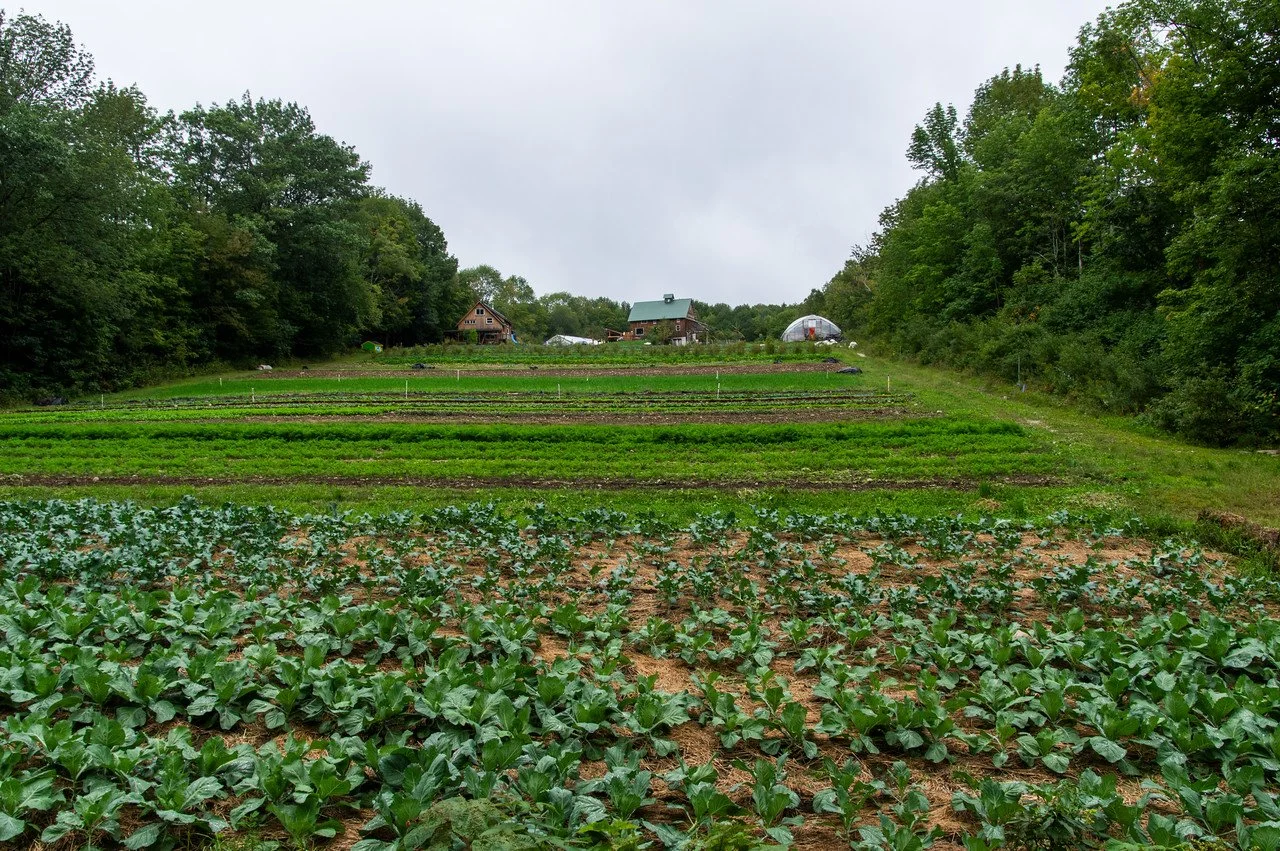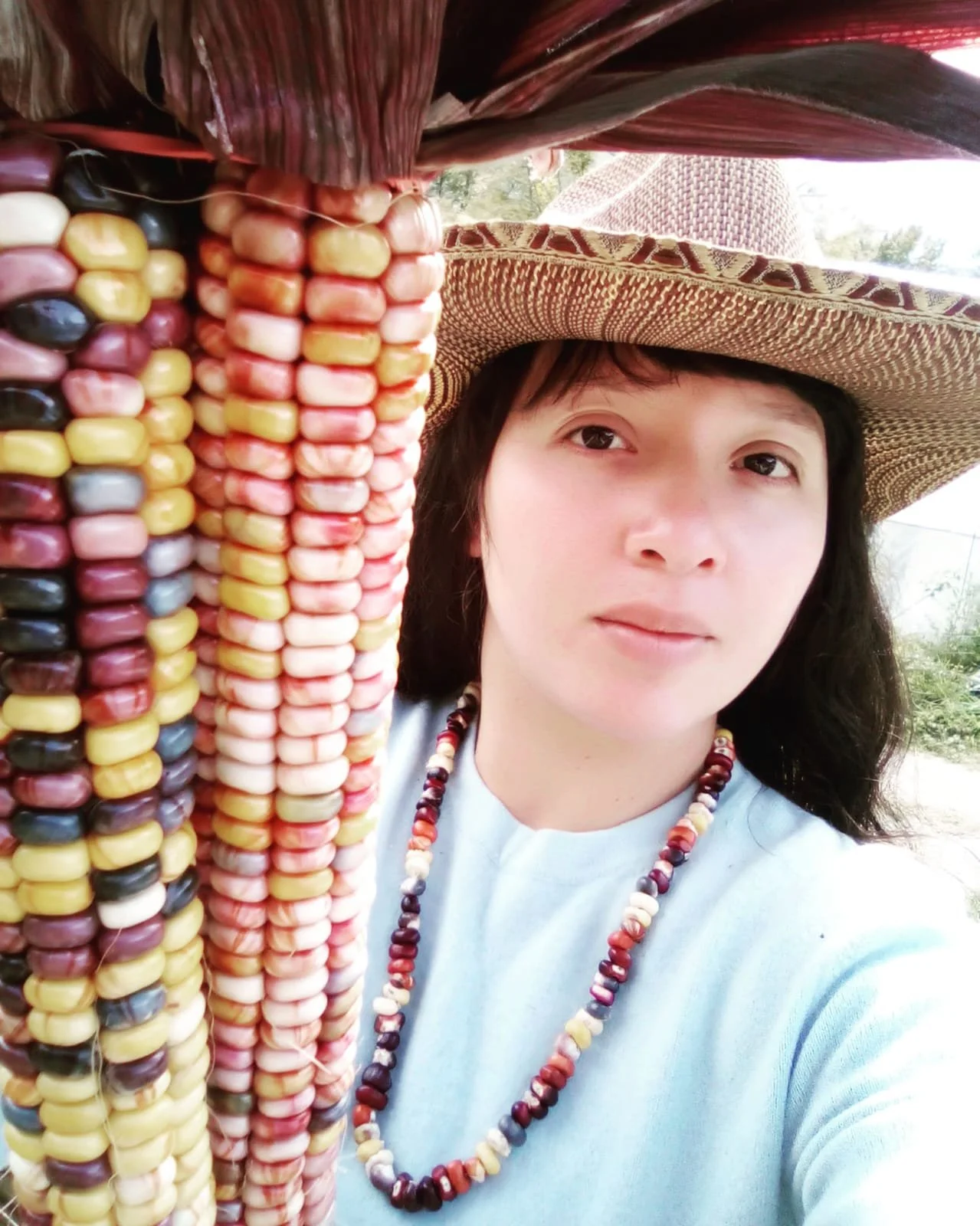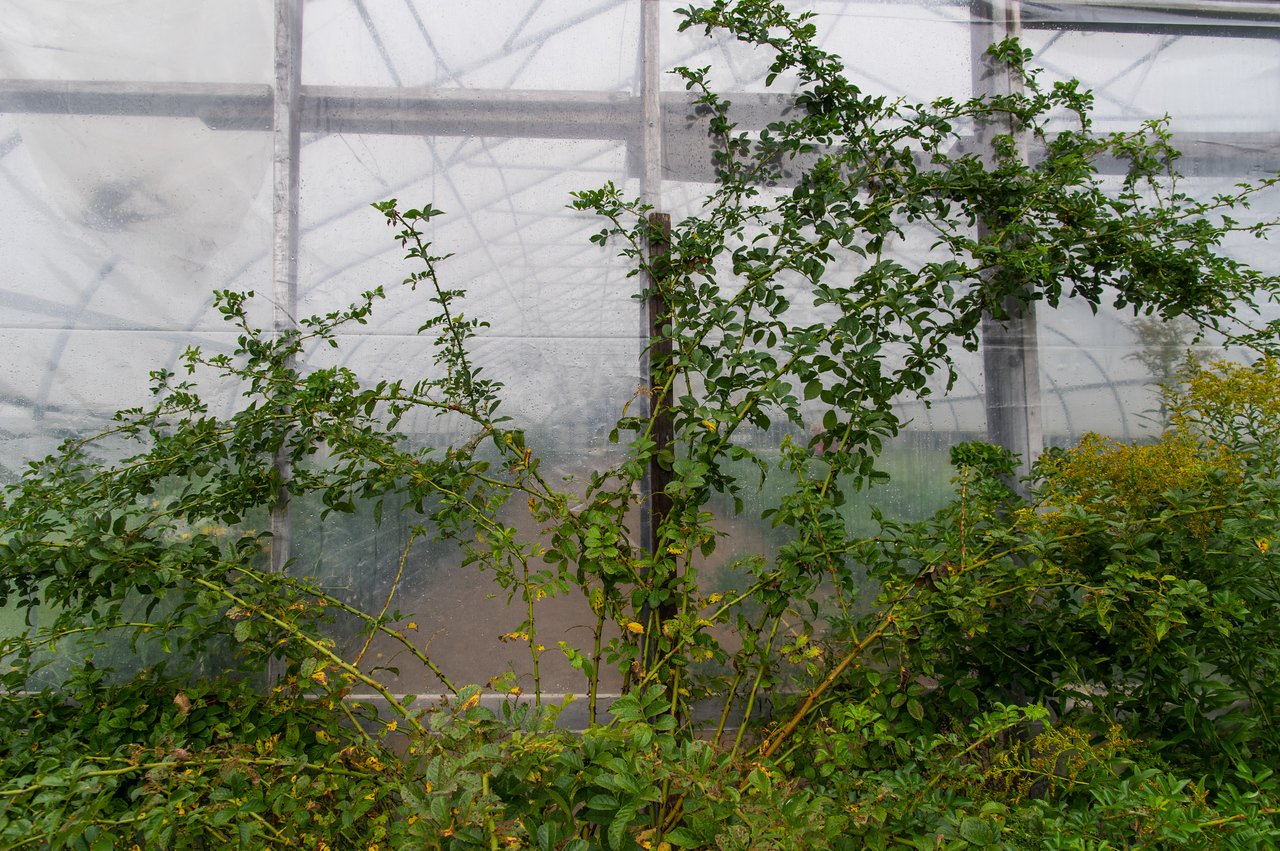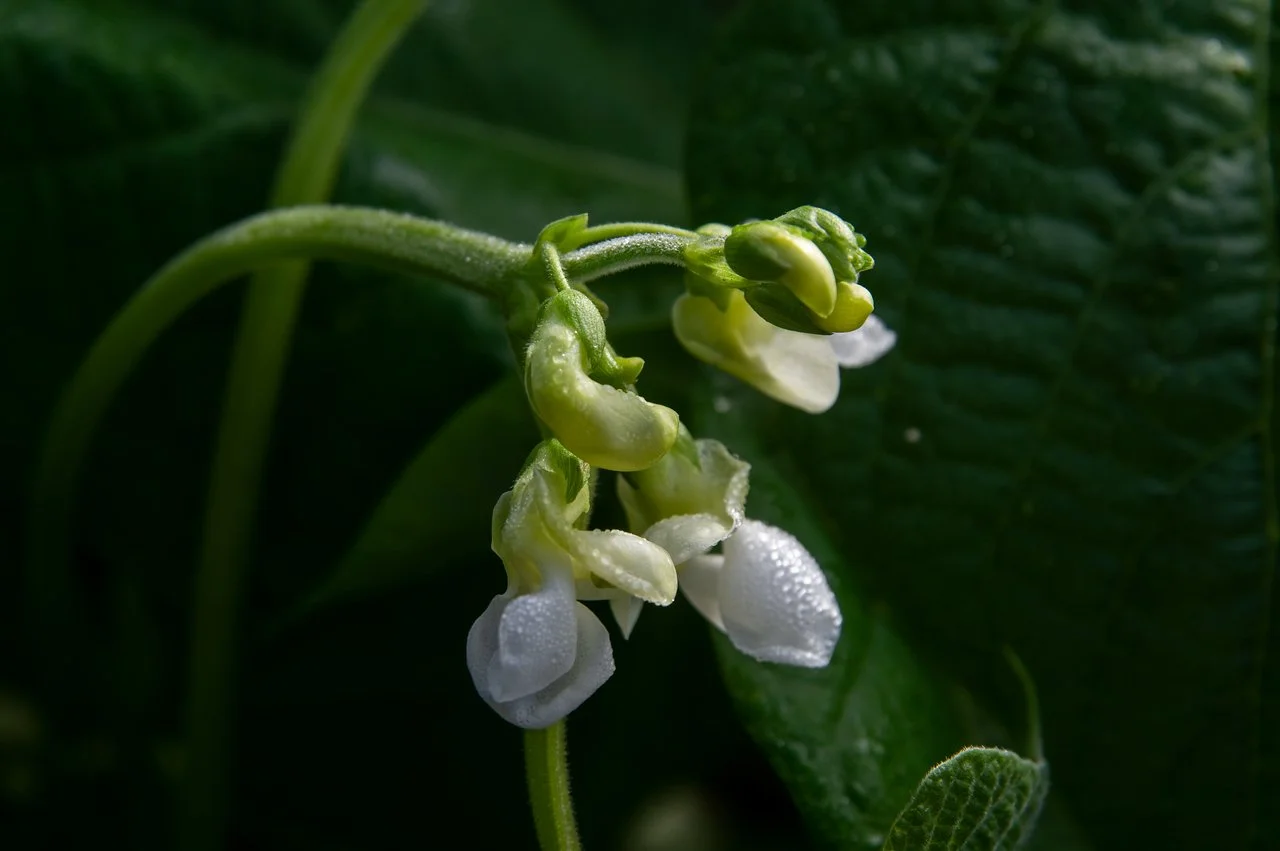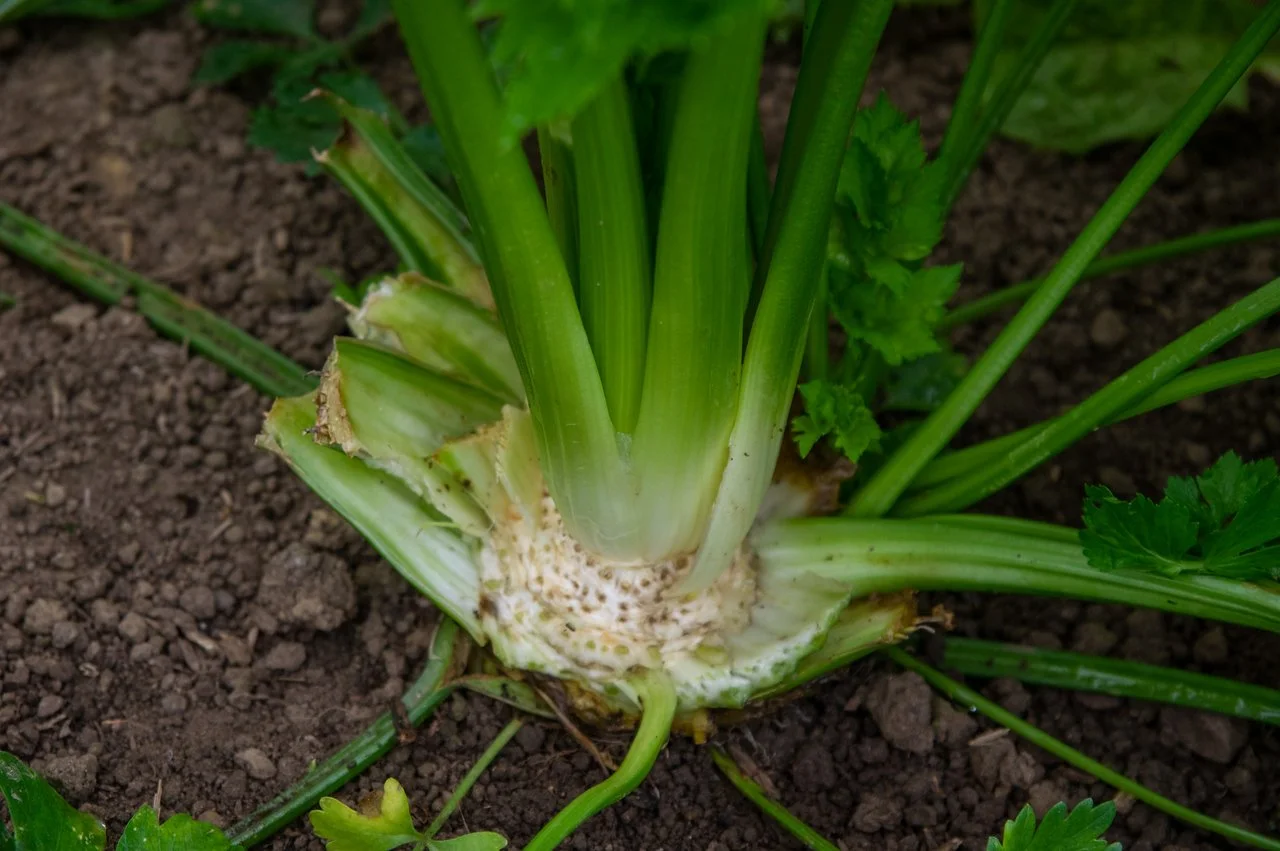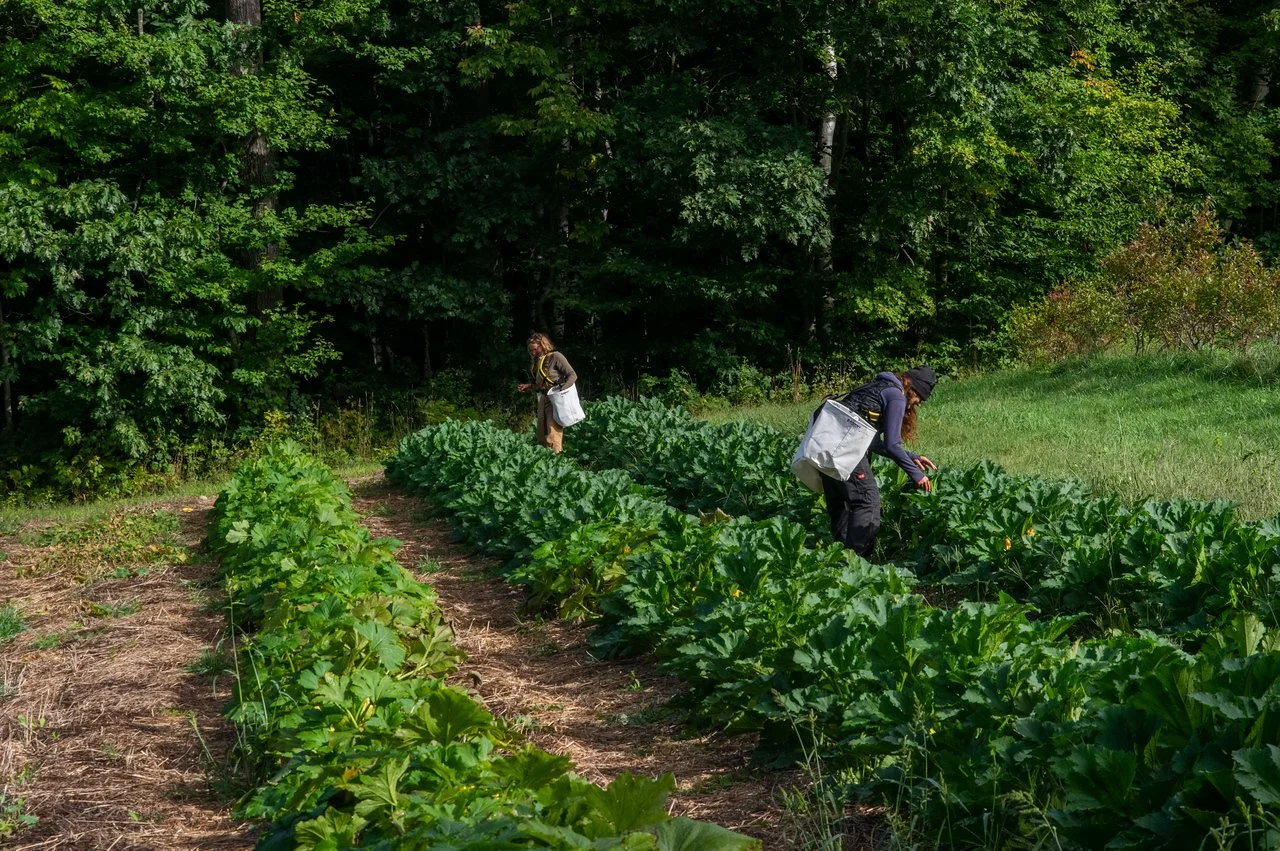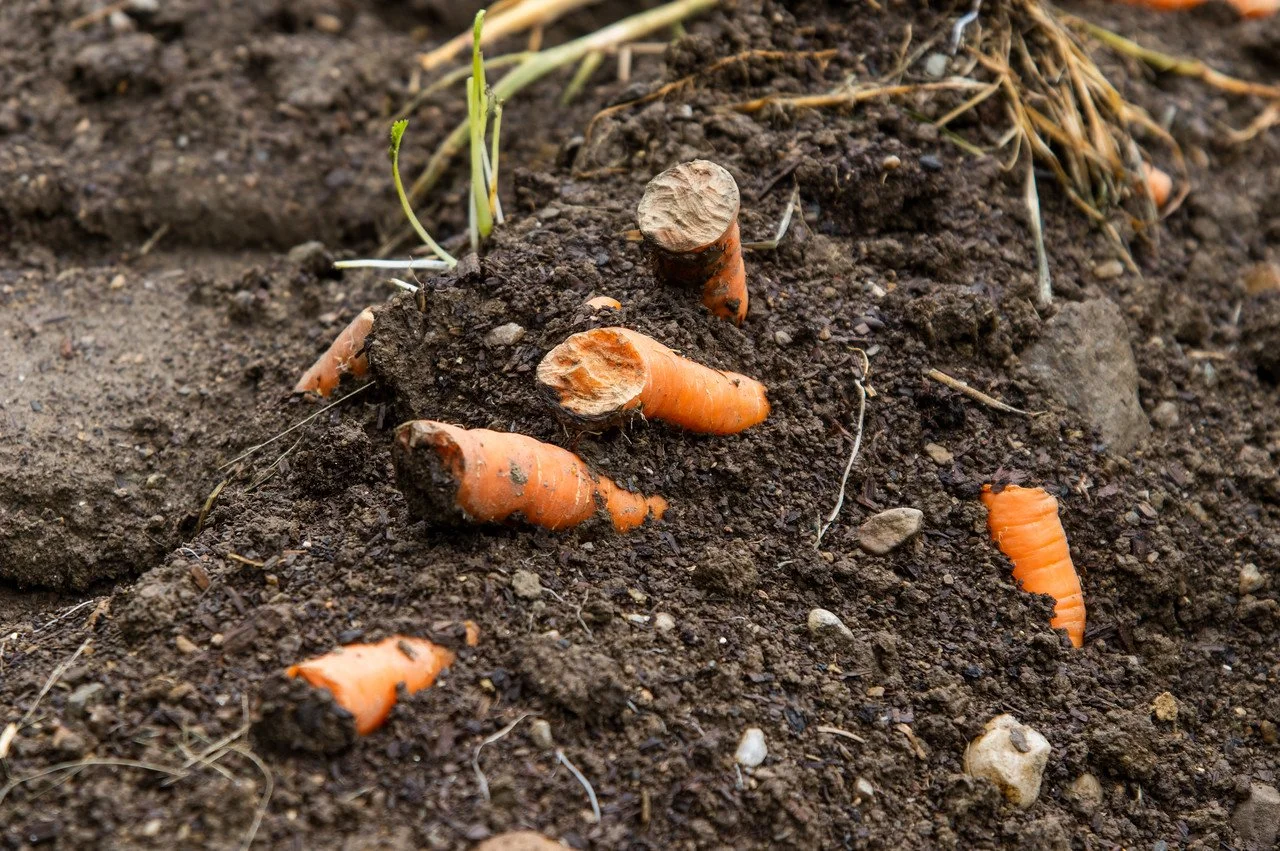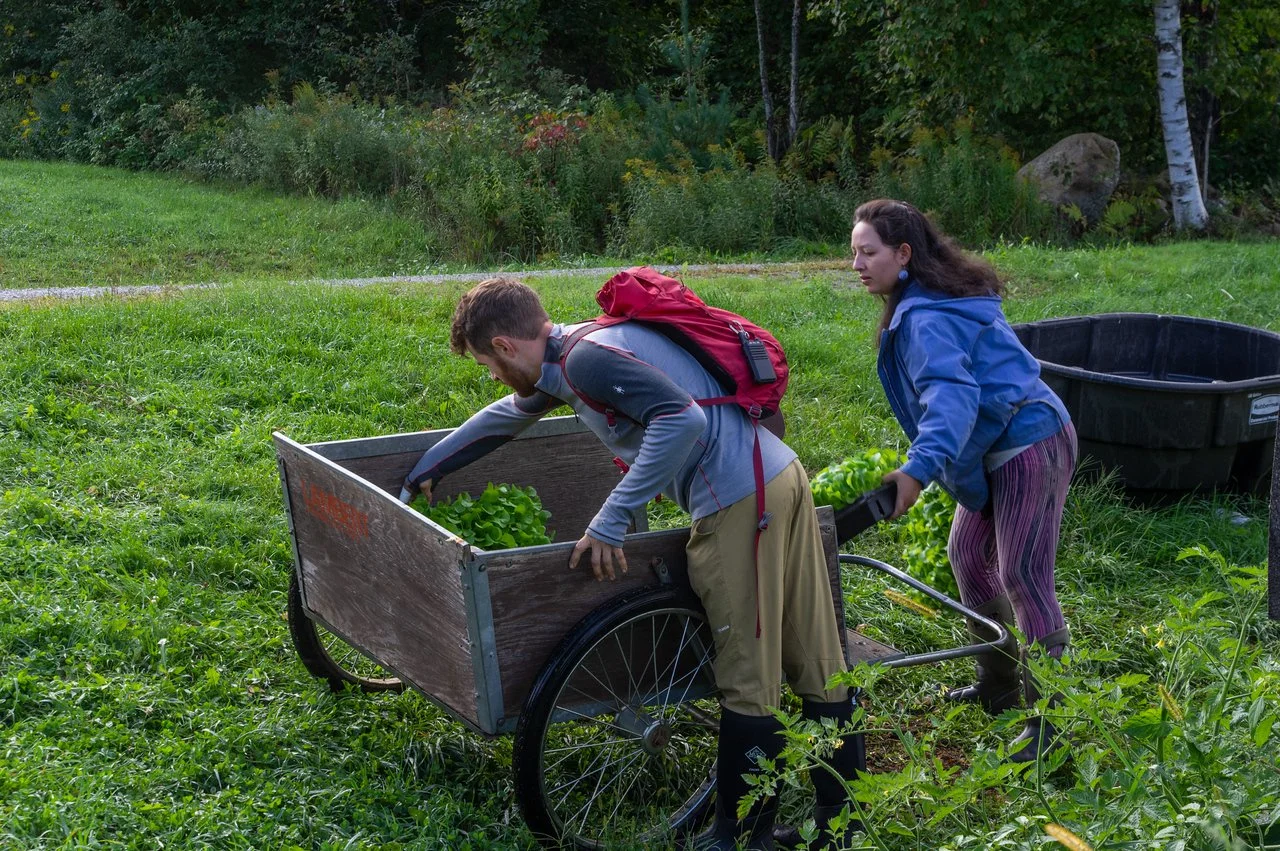17th Week of the Summer CSA season: Week of September 27th
booming fall gardens in the barn field, photo by Adam Ford
CSA Balance Due
If you haven’t already paid, your balance is due. You can pay online through your account, mail a check to Evening Song Farm 48 Nice Road, Cuttingsville VT 05738, or leave a check in the CSA cash box at the barn. It’s very cool to pay in smaller chunks, just let us know what your payment plan is. You can also email or call us to pay with EBT.
If you get an email reminder that CSA payment is due: make that payment, let us know when you will be able to, or let us know if the amount due seems wrong. It adds a lot of extra computer time to try to repeatedly follow up with folks individually, so this is a simple way to lighten our administrative work. (Some of the auto emails have been a little funky, so we are happy to answer those questions if you get a weird one.) Thank you!
squash vine, photo by Adam Ford
fall is here, photo by Vanessa Bedoya Melguizo
Vanessa made a delightful rainbow necklace with the Painted Mountain corn, photo by Vanessa Bedoya Melguizo
This Week’s Availability
This week we will have slicing tomatoes, grape tomatoes, cherry tomatoes, husk cherries, shallots, sweet onions, celery, leeks, garlic scapes, purple kohlrabi, basil, parsley, cilantro, baby lettuce, spinach, arugula, pea shoots, baby bok choi, green curly kale bunches, lacinato kale bunches, rainbow chard bunches, red beets bunches, yellow beet bunches, carrot bunches, caraflex cabbage, red carmen sweet bull’s horn peppers, zucchini, summer squash, garlic bulbs, green tomatoes, spaghetti squash, mini butternut, delicata, red potaotes, yellow potatoes, and painted mountain flour corn**.
*The mini butternut is very small. These are a delicious little squash that was bred for flavor, and to have a “single serving” size for two people. (They are not a standard butternut variety that didn’t size up… they are ripe and delicious at this size. You can read about this variety and how to use them here.) Think of it like cooking a delicata squash that has the shape and flavor of a butternut. The skin on this is tender enough to eat as well, just like a delicata.
**The painted mountain flour corn is a grain corn that we use extensively after grinding into flour for many things such as corn bread, tortillas, empanadas, pancakes, waffles, in veggie “meat balls,” etc. We use a little hand crank grain grinder, but we have heard from folks who successfully grind their corn with a coffee grinder and food processor. It is also a beautiful decorative corn to display this time of year. Also, we put a small drill bit in our drill, and carefully drill through 1 row of the kernels on the cob at a time, and then remove them, and they make extraordinary beads for kids to make things with. Really, an all around fun food!
those clouds, photo by Adam Ford
flower garden, photo by Adam Ford
Ordering closes at noon on Tuesdays for Wednesday bags, and at midnight on Wednesdays for Friday bags.
You do not need to fill out the form if you plan to come to the barn on Tuesdays, Wednesdays or Thursdays to pick out your items yourself.
If you have any trouble using the online to order your veggies this week (or change your pickup location, or skip this week, or anything…) reach out to us. It’s easy to help.
dew on the morning glory, photo by Adam Ford
more dew on a different morning glory, photo by Adam Ford
Fall CSA Sign Up
The Fall CSA season is ready for sign ups. We do keep the fall, winter, and spring memberships smaller than the summer, and we prioritize space for returning CSA members, but try to sign up sooner than later.
we find nests everywhere, photo by Adam Ford
because there are so many bird feeders growing, photo by Adam Ford
Farm News
We mostly focused on working on transplanting rounds of winter greens in the newly cleared tunnels. (As well as keeping up with all the weekly harvesting of food that goes out during the week… Did you know, not even with the wholesale orders, that we send out about 1800 “items” each week? We just figured that item number out this week as we plan for future CSA seasons, and I thought it was a wild number to think about… If you are a small share member, and you select 6 items each wekk, imagine multiplying that by 300, and that’s how many items we harvest to send out each week. Wild!)
Earlier this summer I was lent a great book by a CSA member, Hurricane Lizards and Plastic Squid, by Thor Hanson. It’s a really fun, accessible, interesting read about the biological adaptations among plants and animals adapting to the climate crisis. I think it’s worth seeing if your local library has a copy. I almost felt optimistic reading it, because it’s through the lens of seeing all the ways that organisms have already been adapting to their rapidly changing habitats. (Of course plenty of organisms have not been able to adapt, and some have already gone extinct. But any way I can find some optimism reading about the science of climate change, I will take it.)
Some of my favorite nuggets from this book include when the author explains: “When faced with climate challenge, species don’t simply give up— they do all they can to adjust. Some succeed and some fail, and taking the time to learn what does gives us new insights into our own reactions.” Sometimes I feel like “why am I choosing to work so hard as a farmer, when climate catastrophe is inevitable.. why aren’t I just drinking margaritas on a beach and playing soccer with my kids? What’s the point of trying so hard?” But reading that quote within the descriptions in that book, I am reminded that I am just another species on this planet… and every other species is doing anything they can to adjust to our climate reality. With this view, it’s biologically programmed in me to do this work, of trying to create solutions to keep living on our only habitable planet. The author quotes, Edward Everett Hale (pre-climate change being a concern people were thinking about): “I cannot do everything, but still I can do something. And because I cannot do everything, I will not refuse to do the something that I can do.” This resonates strongly with me, especially the last part. It feels like it’s essential that we do the things that we can do.
And finally the theme of the book that I felt throughout reading it was when the author articulated how observing the responses and adaptations of plants and animals “may not make us worry less about the crisis, but it does help us to worry smart.” We really ought to funnel our climate worrying into smart worrying to make the changes and differences where we can. And I hope as we continue to choose to farm, that we remember to pursue solutions through that lens. I can’t yet figure out how to package baby greens without plastic, but I can get the last of the solar panels up to have the farm’s electricity come 100% from the sun. I can’t figure out how to source our organic fertilizer without plastic wrapping, but we can keep developing our low- and no-till practices. Do everything we can first, and then scratch our heads harder for things that seem insurmountable now.
Have a great week!
ESF Team: Kara, Ryan, Molly, Vanessa, Cindy, Taylor, Katie, Galen, Jake, K2, (and Sky and Soraya)
Weekly Recipe
variation to the recipe above! In a food magazine I just read, they make the recipe above WITHOUT removing the seeds. You can skip that step, and bake the delicata slices with the seeds in. It makes a lot of sense to me and I can’t wait to try it out. We usually scrape out the seeds, but then toss those same seeds with olive oil and salt and roast them. But with the variation of leaving them in after you slice the squash, you are cooking it all at once, and making for a super fun texture with the smooth, soft roasted delicata rings with crispy, salty seed on the inside. Give it a shot!
lettuce waiting to be transplanted, photo by Adam Ford
multiflora (behind the BFG) waiting to be removed, photo by Adam Ford
spaghetti squash, photo by Adam Ford
celeriac still sizing up for a later fall harvest, photo by Adam Ford
this round of fall cabbage still needs more time to start heading up, photo by Adam Ford
hilarious but effective solution to the back corner of the new building being “poking out your eye height”, photo by Adam Ford
we love ogling cover crops, photo by Adam Ford
any idea what crop we are hopeful to sneak in a late season harvest of? photo by Adam Ford
splitting winter heat, photo by Adam Ford
carrying water to the goats, photo by Adam Ford
potato missed in the field, photo by Adam Ford
love lies bleeding, photo by Adam Ford
Although Bella and Zeah are not directly part of our vegetable production, they remain an important part of our farm system… particularly my own joy: All my early experiences working on farms started my mornings with milking animals. It’s a rhythm that helps me set my intentions for the day: breathing stillness, care, attention, connection into the work I do. And to be honest, it’s quite nice that it’s not a full herd of milking animals, just my two little buddies with their distinct personalities, desires for strong head rubs, and reliably generous gifts of milk in our fridge and fertilizer on our fields, photo by Adam Ford
Jake built this cool teeter totter (that he also added a tall wire cage to on one side) for our team’s fall equinox earth celebration we had for ourselves last weekend… one side of the setup had a large rock, and one side he built a tall fire in the wire cage, and as the fire would burn, he would add more logs to keep the teeter totter even…. and Vanessa led us in a equinox ceremony to honor the earth with traditional songs and offerings from her own experiences living in Colombia and participating in indigenous traditions with her taita , photo by Adam Ford
this is what is looks like to harvest celery in our setup… like kale or chard, largest stalks form the outside to make bunches to allow the plant to keep growing all season, photo by Adam Ford
Katie and Galen harvesting zucchini and squash, photo by Adam Ford
cherry tomato rainbow, photo by Adam Ford
damaged carrots left behind, photo by Adam Ford
Jake and Vanessa loading transplants in to move to the tunnel, photo by Adam Ford
Vanessa and Jake tucking lettuce in the newly steamed tunnel beds, photo by Adam Ford

